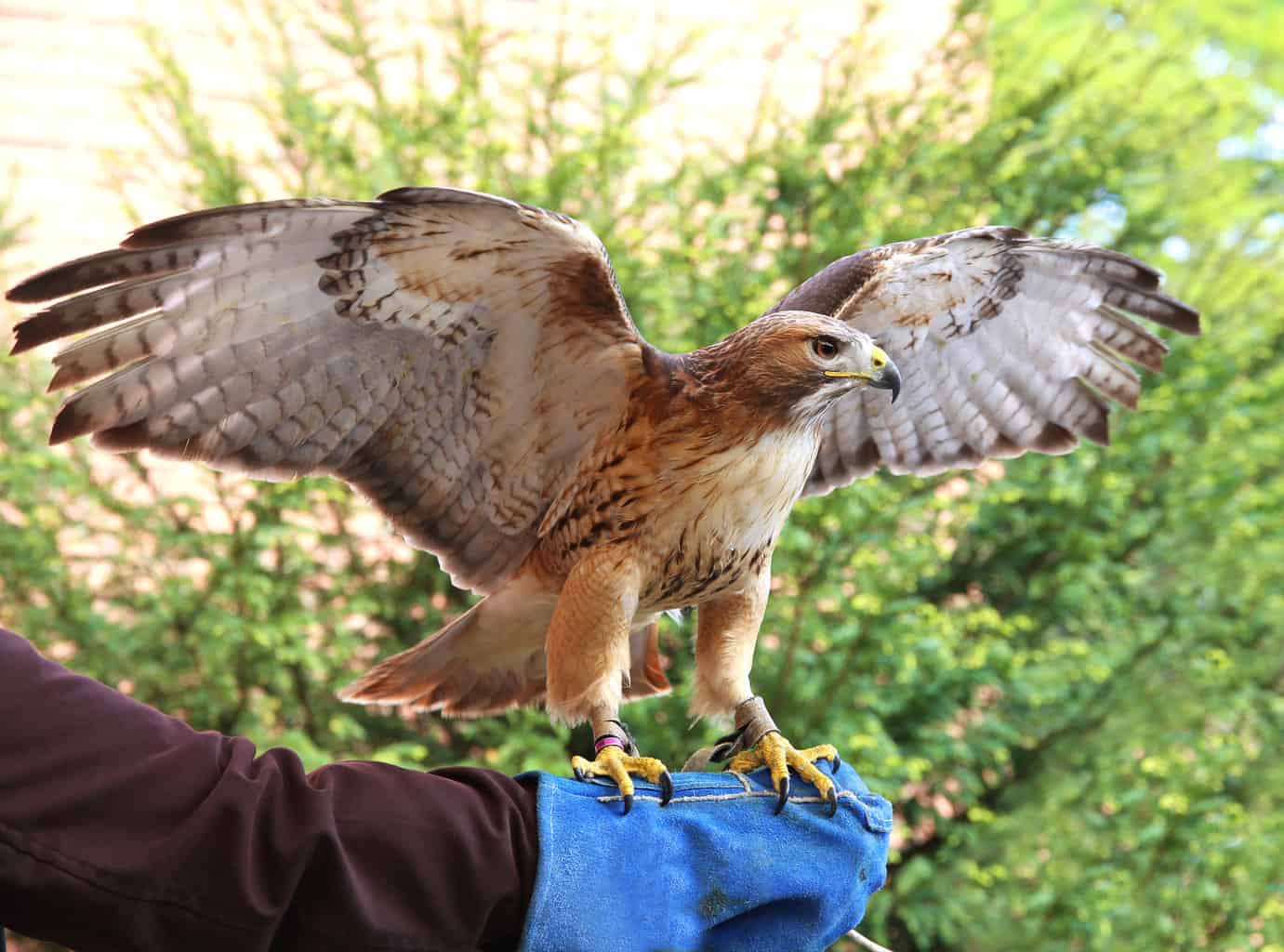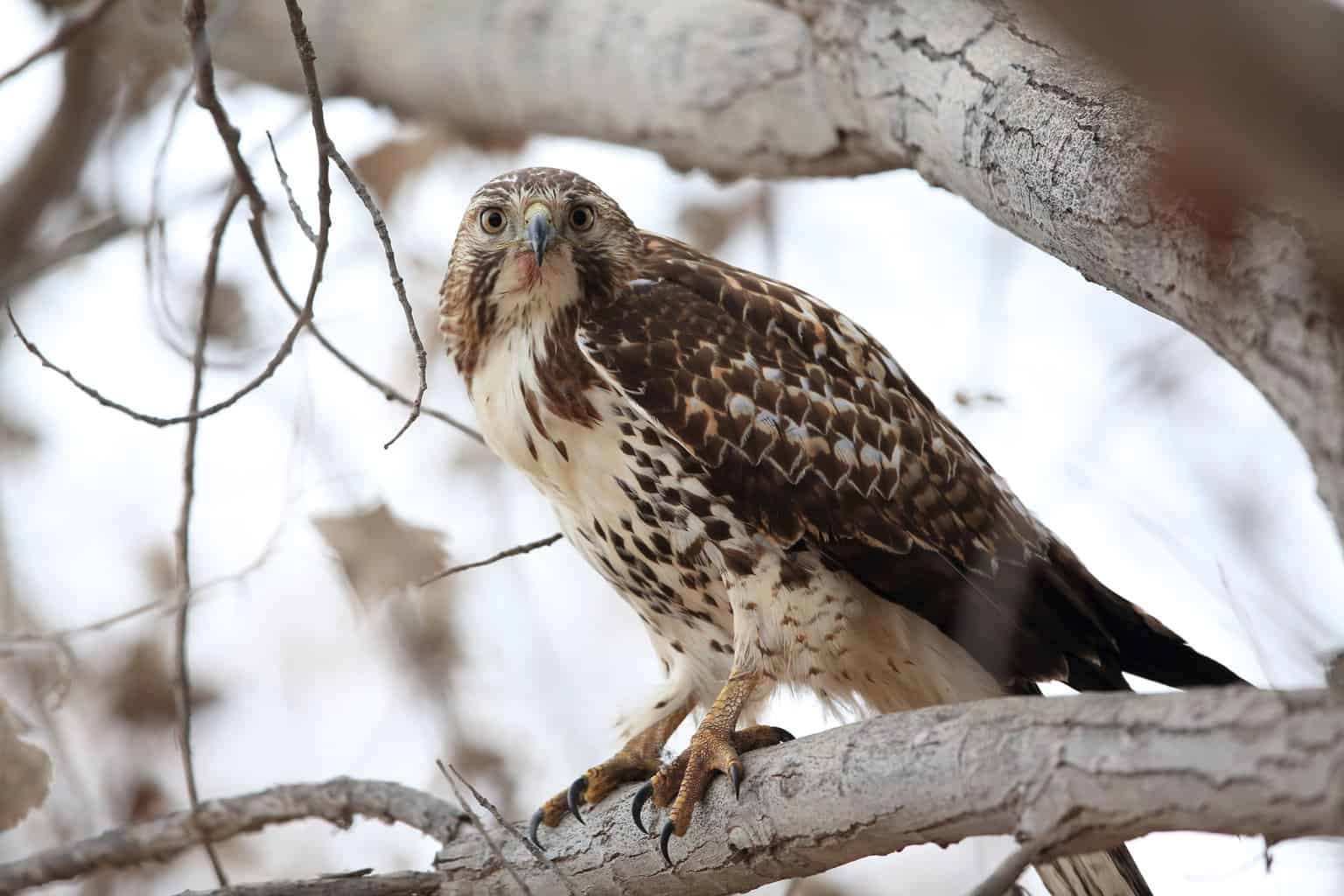Naming conventions for ‘hawks’ in North America can often lead to confusion since some names are misleading regarding the genetic history of a bird and where it lies in genus and species. And some names, like ‘Chicken hawk,’ can refer to more than one species.
If you are wondering whether a Chicken hawk is the same as a red-tailed hawk, then you should understand that while all Red-tailed hawks can be Chicken hawks, not all Chicken hawks are Red-tailed hawks.
This is because the name Chicken hawk refers to Red-tailed hawks and two other species: Cooper’s hawks and Sharp-shinned hawks.
What is a Chicken Hawk?

Chicken hawk is not an official name for any one particular bird. Instead, it is a common term used to refer to three different bird species believed to be aerial predators of chickens.
However, not all of these species are a threat to a flock of hens. And the name is something of a misnomer.
The three types of Chicken hawks are the Red-tailed hawk, Cooper’s hawk, and the Sharp-shinned hawk.
Why is a Red-tailed Hawk Called a Chicken Hawk?
The adult Red-tailed hawk (Buteo jamaicensis) is the most likely to be a threat to chickens. However, while it is referred to as a Chicken hawk, it rarely preys on standard-sized chickens.
The hawk has brown upperparts, a pale breast, a streaked belly, and a copper-colored tail.
Will Red-tailed Hawks Eat Chickens?
Mammals make up the bulk of most Red-tailed Hawk meals. Frequent victims include voles, mice, wood rats, rabbits, snowshoe hares, jackrabbits, and ground squirrels. The hawks also eat birds, including pheasants, bobwhite, starlings, and blackbirds, as well as snakes and carrion.
However, aggressive Red-tailed hawks can sometimes kill and eat chickens, and smaller chickens and chicks are more vulnerable to this predation.

Though they prefer other common prey, they have been known to attack a backyard flock, so chicken keepers sometimes have to take steps to protect their hens when these aggressive predators are about.
Will Cooper’s Hawks Eat Chickens?
The Cooper’s hawk (Accipiter cooperii) is a true hawk of medium size native to North America. It is called a Chicken hawk and is also referred to as a Quail hawk.
These birds of prey will eat smaller birds. However, they typically hunt small to medium-sized birds and sometimes small mammals or reptiles. They are not a significant concern for those who keep chickens since other birds make up the bulk of their diet.
Though they can take chickens, they are less likely to do so than Red-tailed hawks.
Will Sharp-shinned Hawks Eat Chickens?
The Sharp-shinned hawk (Accipiter striatus) is a small hawk species. The males are the smallest hawks in the United States and Canada.
Most of this hawk’s prey are small birds, especially songbirds such as sparrows, wood-warblers, finches, wrens, nuthatches, tits, icterids, and thrushes. Their prey range in size from a 4.4-gram Anna’s hummingbird to a 577-gram Ruffed grouse, and virtually any bird within this size range is potential prey.
However, the term ‘Chicken hawk’ is essentially a misnomer since chickens do not typically make up a large part of this bird’s diet, even though it may take them on occasion.
What Hawk is Bigger than a Red-Tail?
The largest of the North American Buteo hawks or buzzards is the Ferruginous rough-leg or Ferruginous hawk (Buteo regalis). This species lives in grasslands, prairie, and shrub-steppe country endemic to the interior parts of North America.
Among native raptorial birds, only larger eagles and similarly sized Great horned owls can regularly outmatch this large and powerful hawk. These birds have a similar diet to the Red-tailed hawk, which is mainly comprised of mammals, birds, and reptiles. Though they could potentially threaten backyard chickens, they are not typically interested and are not considered a serious threat.
The Rough-legged hawk (Buteo lagopus) is similar in size to a Red-tail, though typically slightly smaller. Rough-legged hawks primarily eat small mammals, though they also eat birds. They could potentially take a chicken but are not commonly considered to be a predator of a backyard flock.
Which Other Birds Predate Backyard Chickens?
Eagles are another group of birds that might kill and eat backyard chickens. Eagle is the common name for many large birds of prey of the family Accipitridae. They are larger than the Chicken hawks mentioned above.
Though actual eagles such as the Golden eagle and Bald eagle, common in North America, mostly eat wild prey, they are opportunists. Free-range chickens on a property where they are present may be subject to predation.
Owls like the Great horned owl can also eat chickens and may prey on those left unprotected at night.
Is an Osprey a Chicken Hawk?
The osprey (Pandion haliaetus) is sometimes known as the fish eagle, sea hawk, river hawk, or fish hawk. It is similar in size to the largest members of the Buteo or Falco genera, and is another large raptor.
However, its diet consists primarily of fish. So it is not generally considered a ‘Chicken hawk’ or a predator of a chicken flock. However, they are opportunistic hunters, and these large birds may take a small hen or a chick on rare occasions.
How to Protect Chickens From ‘Chicken Hawks’ & Other Birds of Prey
The important thing to remember is that while some birds can prey on chickens, these majestic birds are wonderful to have around. Remember, while some birds can kill and eat chickens, most will focus on other prey – so Chicken hawks can help keep a rodent problem in check or otherwise aid in maintaining a balanced ecosystem.
The key is to ensure that you do not harm protected species (which is, in any case, against the law) and instead nurture and protect these species while keeping your flock safe from predation.
To protect backyard chickens, you can:
- Keep runs and outdoor areas covered.
- Provide a covered area for a feeding/water station since hens pay less attention to their surroundings and are most vulnerable when feeding or drinking.
- Increase tree and shrub cover in areas used by free-ranging birds.
- Provide shelters and coops for chickens to retreat to quickly if attacked.
- Add guards for your flock (geese, dogs, a rooster, etc.).
Creating a healthy ecosystem in your garden, with plenty of other food sources for birds of prey, should help keep chickens safe. So, foster as wide a range of wildlife as possible on your property.
Remember, though birds of prey can sometimes threaten backyard flocks, the benefits they provide within an ecosystem far outweigh any problems they can bring. So we should all do what we can to protect and provide for the raptors sharing our space if we are lucky enough to have some around.

